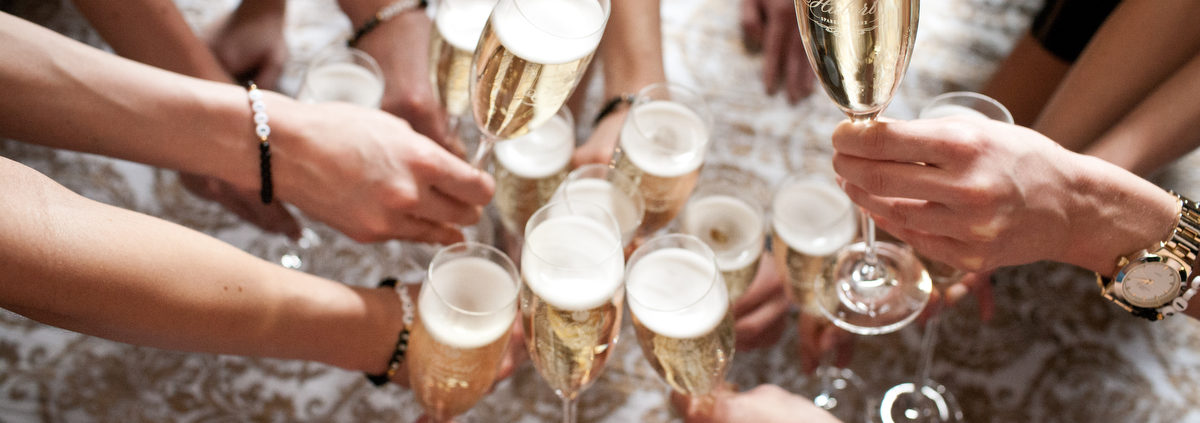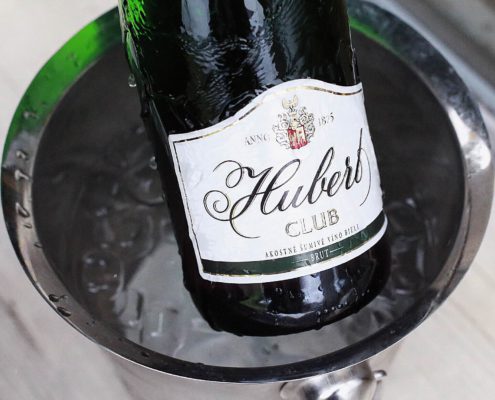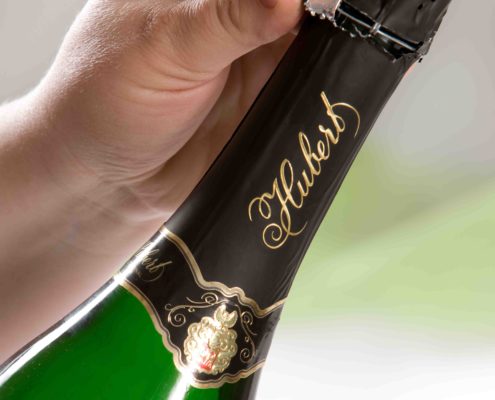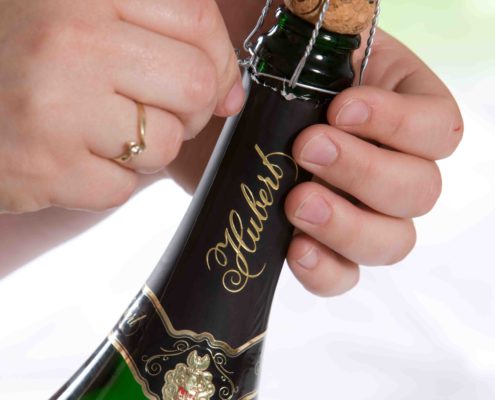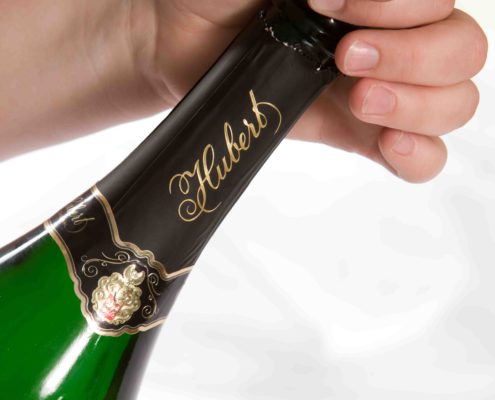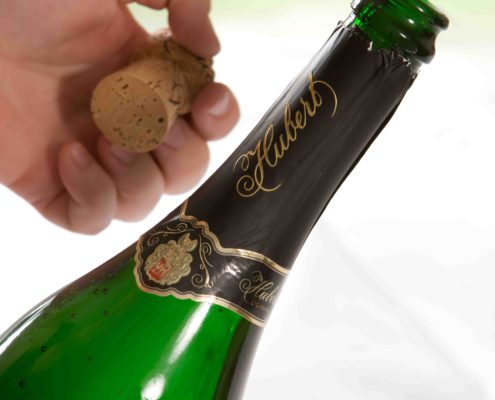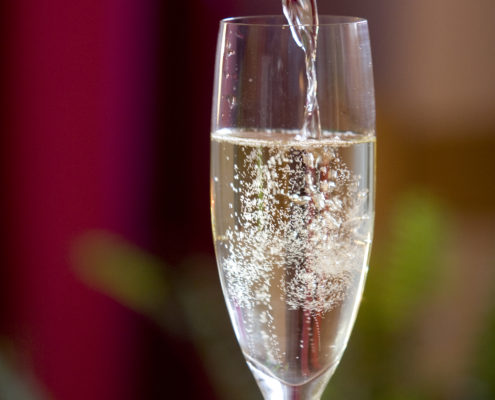How to serve sparkling wine
To good company belongs high quality sparkling wine served at the right temperature and in the right glasses. We can help you how to properly serve sparkling wine.
The right glasses for sparkling wine
It was common practice in the past to drink sparkling wine from glasses with a large surface. However, it was found that for serving are these glasses unfit. The large surface of the sparkling wine poured in this type of glass causes the bouquet substances to evaporate too quickly. Also, the effervescence is released too quickly. Since 1950’s large glasses were replaced with thin Champagne glasses called flutes because of their shape. Sparkling wine best shows its qualities in tall slender and elegant glasses. Filled up to 2/3 they are ideal for the bouquet, flavor and maintaining elegant effervescence to develop. Important advice for cleanliness lovers: No detergents should be used in the washing up, since a fine film formed on the glass surface is the biggest enemy of fizzing. For best results, before serving wash the glass in water and wipe with a clean cloth that does not leave fibers behind.
The right temperature for your taste buds
Avoid extreme temperatures when serving sparkling wine. Ideal is to serve it at 6 to 8 degrees Celsius. The flavor will not develop at a lower temperature!
Every drink should be served at its serving temperature. Both white and rose wines should be ideally served at 10 to 12 degrees Celsius and red wines are best at 16 to 18 degrees Celsius.
White sparkling wines are best at 6 to 7 degrees Celsius, rose sparkling wines at 6 to 8 degrees Celsius and red sparkling wines are ideal at 9 to 11 degrees Celsius.
Do you need to chill sparkling wine quickly? Frapping is the thing to do
No matter what, do not serve warm sparkling wine to your visitors! Even the best sparkling wine will not taste good unless chilled. What should you do?
Fill a wine cooler (or a cooking pot) with ice cubes and cold water. Add two table spoons salt on top of the ice. The ice will start to melt and the cold will evaporate. Turn the bottle carefully. After 10 minutes your sparkling wine will have reached an acceptable temperature. This process is called frapping. Be careful when opening the bottle as the sparkling wine may be restless.
Correct bottle opening: still or loud?
It may appear tempting to let the cork fly, in reality a true gentleman will open the bottle unnoticed and without any sound. It is more discrete than loud firing and there is a practical reason as well. A sudden pressure drop in the bottle will often cause uncontrolled fizzing of the sparkling wine. In practice this means that you willbe several glasses or even a bottle of sparkling wine short.
Sparkling wine should be opened at the optimum recommended temperature that prevents over-fizzing. Incline the bottle so that the pressure is released against the bottle wall instead of the bottleneck. Keep a finger on the cork when releasing the agraffe so it doesn’t fire. If the cork holds firmly, gradually release it with waggling and turning motions. Wait until the bubbles are released from the bottle with a slow hissing sound.
If the agraffe stays firmly in place, make use of special pliers. If the cork breaks, use a corkscrew. Just to be on the safe side, wrap the bottleneck in a paper towel.
Do you love high quality sparkling wine? Learn to store it correctly
If you are a true sparkling wine lover you need to know how to store it correctly. There are a few basic rules to follow:
1. The bottle should stand, not lay (to prevent the risk that flavor substances from the cork are released in the wine and the bottle loses pressure)
2. Sparkling wine should be stored in a dark and cool place (cellars with a stable temperature or special wine fridges are ideal)
3. Sparkling wines are not fit for long storage (they leave our production storage at the peak of maturity). After 2 years (bottles with plastic closure) or 3 years (bottles with cork closure) sparkling wine loses its mousseaux and the flavor starts resembling that of sherry.
4. Due to safety reasons, avoid storing sparkling wine in stone shelves (the stone’s rough structure can damage the bottle surface and lead to cracking).
5. Avoid transportation if possible (temperature oscillations, direct light and shaking is detrimental to sparkling wine)
6. Sparkling wine needs to “rest” after transportation before it can be served.


